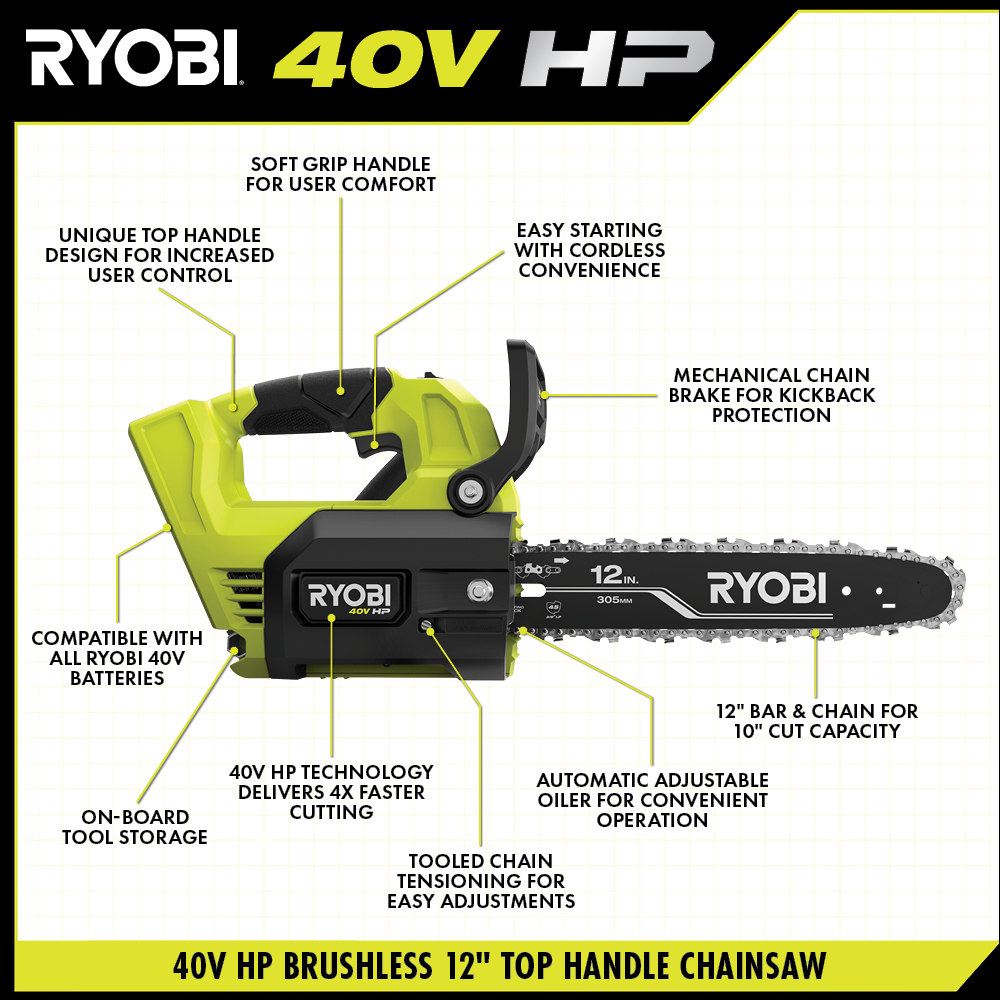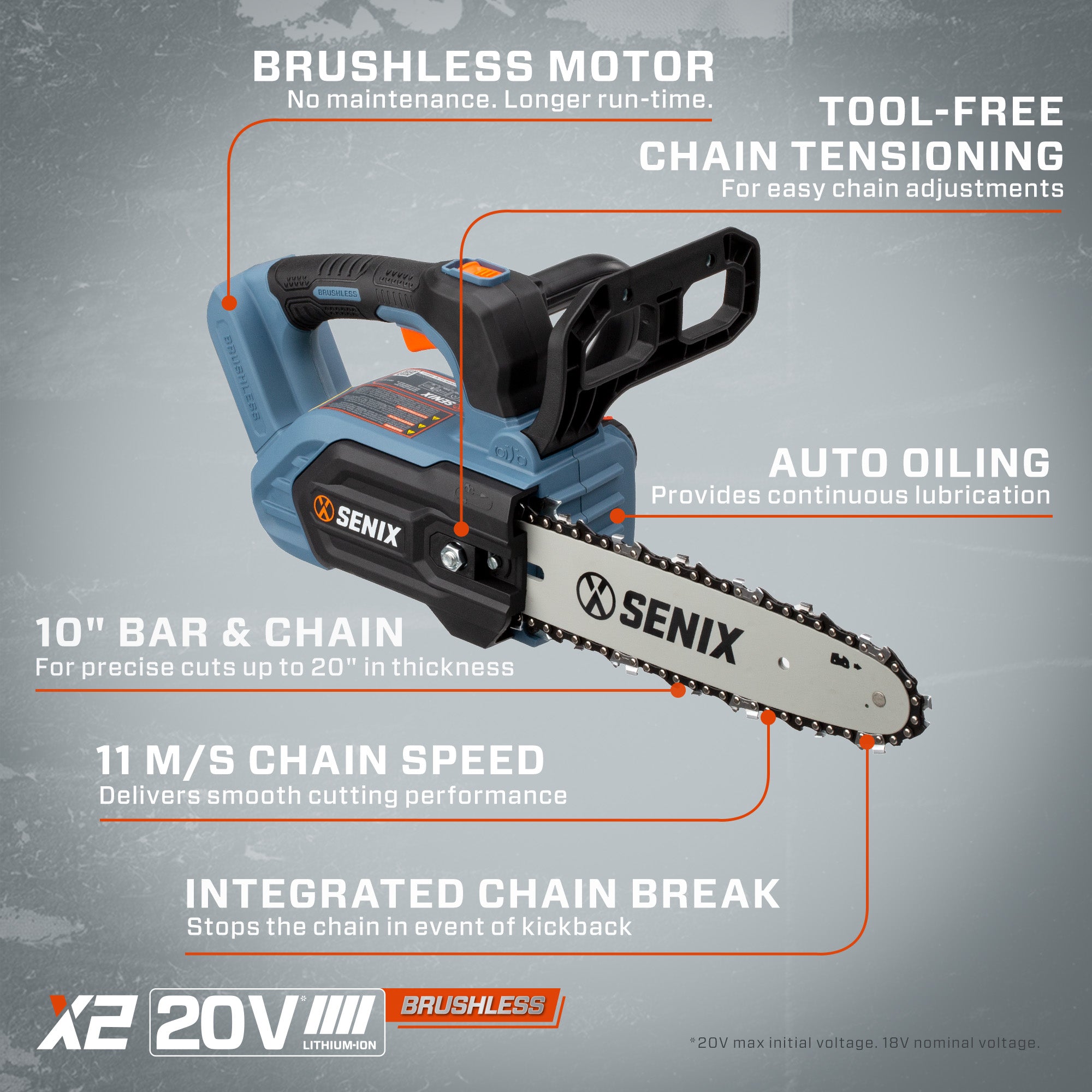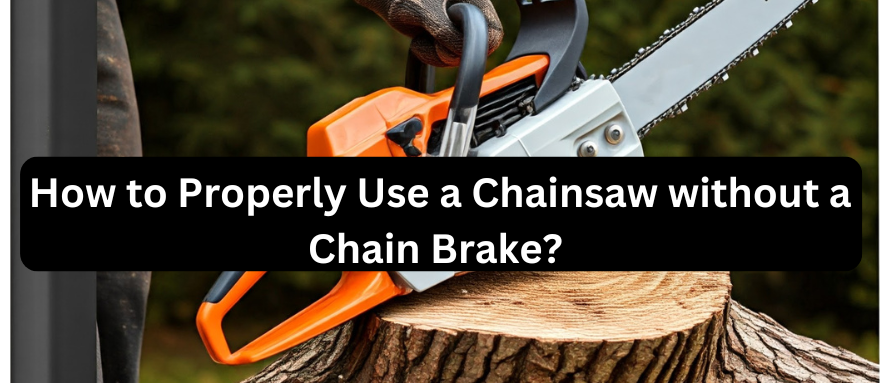Running a chainsaw without a chain brake can be risky. Safety is a top priority.
Using a chainsaw requires skill and careful attention. Without a chain brake, the risks increase. The chain brake is a crucial safety feature. It stops the chain quickly to prevent accidents. But what if your chainsaw lacks this feature? Knowing how to operate it safely is vital.
This blog will guide you through essential steps. We will focus on techniques and tips to keep you safe. Understanding these methods can make a big difference. Let’s explore how to run a chainsaw without a chain brake, ensuring safety and efficiency.
Introduction To Chainsaw Safety
Using a chainsaw without a chain break can be dangerous. Understanding the basics of chainsaw safety is crucial. Every year, many accidents happen due to improper use. This blog section will help you learn about safety gear and risks.
Importance Of Safety Gear
Safety gear is essential for anyone using a chainsaw. The right gear can prevent severe injuries. Here are some must-have items:
- Helmet: Protects your head from falling debris.
- Goggles: Shields your eyes from wood chips.
- Ear Protection: Reduces noise damage to your ears.
- Gloves: Offers better grip and protects your hands.
- Chaps: Safeguards your legs from cuts.
- Boots: Steel-toed boots protect your feet.
Risks Of Operating Without A Chain Break
A chain break is a vital safety feature. It stops the chain in case of kickback. Operating without it increases the risk of injury. Here are some of the dangers:
- Kickback: The chainsaw can jerk back suddenly, causing harm.
- Loss of Control: Without a chain break, you may lose control.
- Increased Speed: The chain keeps moving, leading to more accidents.
Always ensure your chainsaw has a working chain break. Safety should be your top priority.
Pre-operational Checks
Before starting your chainsaw, ensure it is safe. These pre-operational checks are essential. They help prevent accidents and ensure smooth operation.
Inspecting The Chainsaw
Inspecting the chainsaw is the first step. Check for visible damage. Look for cracks, dents, or loose parts.
- Examine the bar and chain. Ensure they are secure.
- Check the tension. The chain should not be too loose.
- Inspect the air filter. It should be clean and free from debris.
Ensuring Proper Lubrication
Proper lubrication is crucial for a chainsaw. It reduces friction and wear.
Here’s how to ensure your chainsaw is well-lubricated:
- Check the oil level. Refill if necessary.
- Verify the oil pump is working. Test by running the chainsaw and observing oil flow.
- Ensure the chain is lubricated. Use appropriate chain oil.
A well-lubricated chainsaw will last longer. It will also perform better.
Starting The Chainsaw
Starting a chainsaw without a chain brake can be tricky. Safety is crucial. Follow the steps carefully to ensure a safe start. In this section, we will cover the correct starting procedure and some effective warm-up techniques.
Correct Starting Procedure
Begin by placing the chainsaw on a flat surface. This ensures stability. Engage the choke to allow for easier starting. Pull the starter cord smoothly until you feel resistance. Then, pull it quickly and firmly.
Once the engine starts, let it run for a few seconds. Then, disengage the choke. If the engine stalls, repeat the process. This may take a few tries, especially if the chainsaw is new or has not been used for a while.
Important: Always ensure the chain is not in contact with any surface while starting. This prevents accidents and damage to the chain.
Warm-up Techniques
After starting the chainsaw, allow it to idle for a minute. This warms up the engine. A warm engine performs better and is less likely to stall.
Rev the engine slightly to check the throttle response. If the engine responds well, it is ready for use. If not, give it more time to warm up. You may also need to adjust the idle speed.
Once the chainsaw is warm, check the chain tension. A properly tensioned chain ensures smooth operation. Adjust the tension if necessary before starting your cutting tasks.
Using these warm-up techniques can prolong the life of your chainsaw. It also ensures safe and efficient operation.

Credit: www.youtube.com
Operating Techniques
Operating a chainsaw without a chain brake can be risky. Proper techniques ensure safety and effectiveness. Focus on your grip, stance, and controlled cutting methods. These steps can help you operate the chainsaw safely.
Proper Grip And Stance
Start with a firm grip on the chainsaw. Use both hands for control. Your right hand should hold the rear handle. The left hand should grasp the front handle. Keep your thumbs wrapped around the handles.
Stand in a stable position. Place your feet shoulder-width apart. Bend your knees slightly. This position helps maintain balance. Keep your body slightly angled away from the cutting direction.
Controlled Cutting Methods
Begin with light, steady pressure. Don’t force the chainsaw through the wood. Let the chainsaw do the work. Always cut at full throttle. This ensures efficiency and safety.
Avoid cutting with the tip of the chainsaw. This can cause kickback. Instead, use the lower part of the bar. This technique reduces the risk of accidents.
Keep the chainsaw close to your body. This helps maintain control. It also reduces fatigue. Regularly check the chain tension. A loose chain can be dangerous.
Maneuvering The Chainsaw
Maneuvering a chainsaw without a chain brake requires skill and caution. Proper handling ensures safety and effective cutting. This section will guide you through handling different angles and avoiding kickback. Follow these tips to improve your chainsaw control and safety.
Handling Different Angles
Understanding how to handle a chainsaw at different angles is crucial. Always maintain a firm grip on the saw. Your feet should be stable and shoulder-width apart. Adjust your stance to match the angle you need to cut.
Here are some tips for handling different angles:
- Horizontal Cuts: Keep the saw level. Use your body weight to guide the saw through the wood.
- Vertical Cuts: Position the saw directly above the cut. Let the saw’s weight do the work.
- Angled Cuts: Adjust your stance and grip. Ensure the saw moves smoothly through the wood.
Practicing these techniques will improve your control. Always wear protective gear to minimize risks.
Avoiding Kickback
Kickback is one of the most dangerous events when using a chainsaw. It occurs when the chain catches on something solid. This can cause the saw to jerk back toward the operator.
Follow these steps to avoid kickback:
- Use the Right Chain: Ensure your chain is sharp and correctly tensioned.
- Maintain a Firm Grip: Hold the saw with both hands. Keep your left hand on the front handle and your right hand on the rear handle.
- Watch Your Position: Always stand to the side of the cut. Never position yourself directly behind the saw.
- Avoid Cutting with the Tip: The tip of the saw is the most common point for kickback. Use the middle part of the bar for cutting.
By following these guidelines, you can reduce the risk of kickback. Remember, safety is paramount when operating a chainsaw.

Credit: espanol.ryobitools.com
Maintenance Tips
Maintaining a chainsaw without a chain brake is crucial for safety and efficiency. Regular care ensures your chainsaw runs smoothly. It also extends the lifespan of your tool. Follow these simple maintenance tips to keep your chainsaw in top shape.
Regular Cleaning
Keep your chainsaw clean. Dirt, sawdust, and oil can build up quickly. This can cause problems. Wipe down the chainsaw after each use. Pay special attention to the air filter. A clean air filter helps the engine run better. If it is clogged, replace it.
Sharpening The Chain
A sharp chain cuts better. Dull chains can be dangerous. They also put more strain on the engine. Use a file to sharpen the chain regularly. Follow the manufacturer’s guidelines for the best results. It’s a good idea to check the chain’s tension too. It should not be too tight or too loose.
Emergency Procedures
Running a chainsaw without a chain brake is risky. Understanding emergency procedures can save lives. Accidents happen quickly. Being prepared is crucial. This section covers how to deal with malfunctions and provide first aid for injuries.
Dealing With Malfunctions
Chainsaw malfunctions can be dangerous. Always stay calm. If the chainsaw stops working, turn it off immediately. Inspect the chainsaw carefully. Look for broken parts or loose screws. Never use a malfunctioning chainsaw. Take it to a professional for repairs.
If the chain gets stuck, do not force it. Turn off the chainsaw. Use a tool to gently free the chain. Forcing it can cause damage. Regular maintenance can prevent many issues. Keep the chainsaw clean and oiled.
First Aid For Injuries
Chainsaw injuries are serious. Stop working immediately. Apply pressure to the wound to stop bleeding. Use a clean cloth or bandage. Elevate the injured area above the heart.
If the injury is severe, call emergency services. Keep the person calm and still. Do not move them unless necessary. Cover them with a blanket to prevent shock. Provide first aid until help arrives.
Always keep a first aid kit nearby. Knowing basic first aid is essential. Take a first aid course if possible. Being prepared saves lives.
Expert Advice
Running a chainsaw without a chain brake can be risky. Expert advice is essential to ensure safety and efficiency. Below are detailed tips from professionals on handling a chainsaw safely in such conditions.
Advanced Safety Tips
Safety should always be a priority. Here are some advanced safety tips:
- Wear Protective Gear: Always wear gloves, goggles, and a helmet.
- Inspect the Chainsaw: Check for any damages or loose parts before use.
- Stable Stance: Maintain a firm stance to avoid losing balance.
- Proper Grip: Hold the chainsaw firmly with both hands.
- Clear Work Area: Ensure the cutting area is free from obstacles.
These tips can greatly reduce the risk of accidents.
When To Consult A Professional
Sometimes, it is best to seek professional help. Here are situations where you should consult a professional:
- Complex Jobs: If the cutting task is too complex or large.
- Technical Issues: If the chainsaw has technical problems you can’t fix.
- Lack of Experience: If you are not confident in your skills.
- Injury Risk: If you feel the task is too dangerous.
Professional assistance can prevent accidents and ensure the job is done correctly.

Credit: senixtools.com
Frequently Asked Questions
Can You Run A Chainsaw Without A Chain Brake?
Yes, but it’s not recommended. A chain brake provides essential safety. Operating without it increases the risk of accidents.
What Is The Purpose Of A Chain Brake?
A chain brake stops the chain instantly during a kickback. It enhances safety and prevents serious injuries.
How Does A Chain Brake Work?
A chain brake activates during a kickback or when manually engaged. It stops the chain immediately, preventing accidents.
Are There Alternatives To Using A Chain Brake?
Alternatives include using safety gear and following proper techniques. However, a chain brake is the most effective safety feature.
Conclusion
Running a chainsaw without a chain break demands caution and preparation. Always prioritize safety. Wear protective gear and maintain a firm grip. Regularly inspect your chainsaw for any issues. Understand your environment and clear any obstacles. Keep your focus sharp to avoid accidents.
Practice proper techniques to ensure efficient and safe operation. Remember, safety comes first. With careful attention, you can use your chainsaw effectively and safely. Stay informed and prepared for any situation. Enjoy your time working with your chainsaw, and stay safe.
